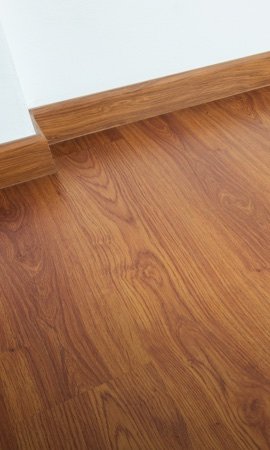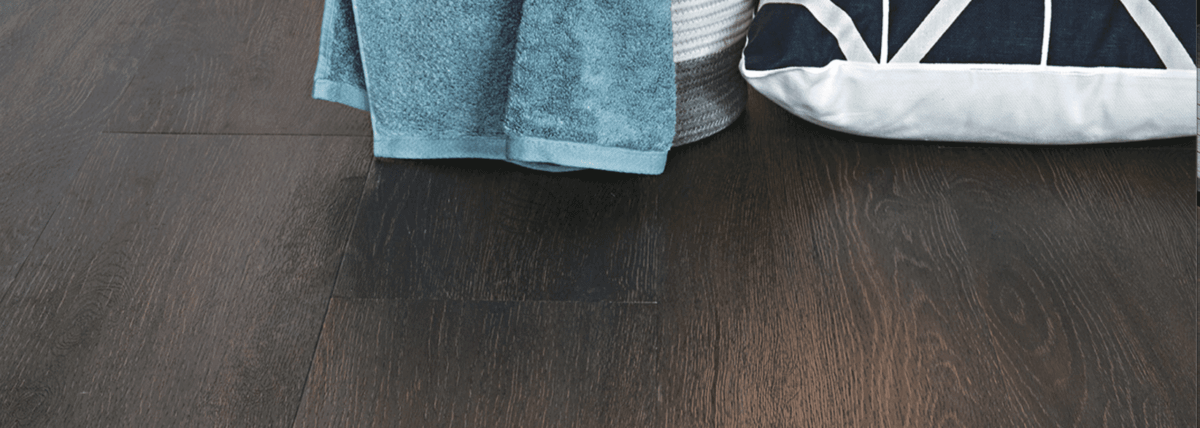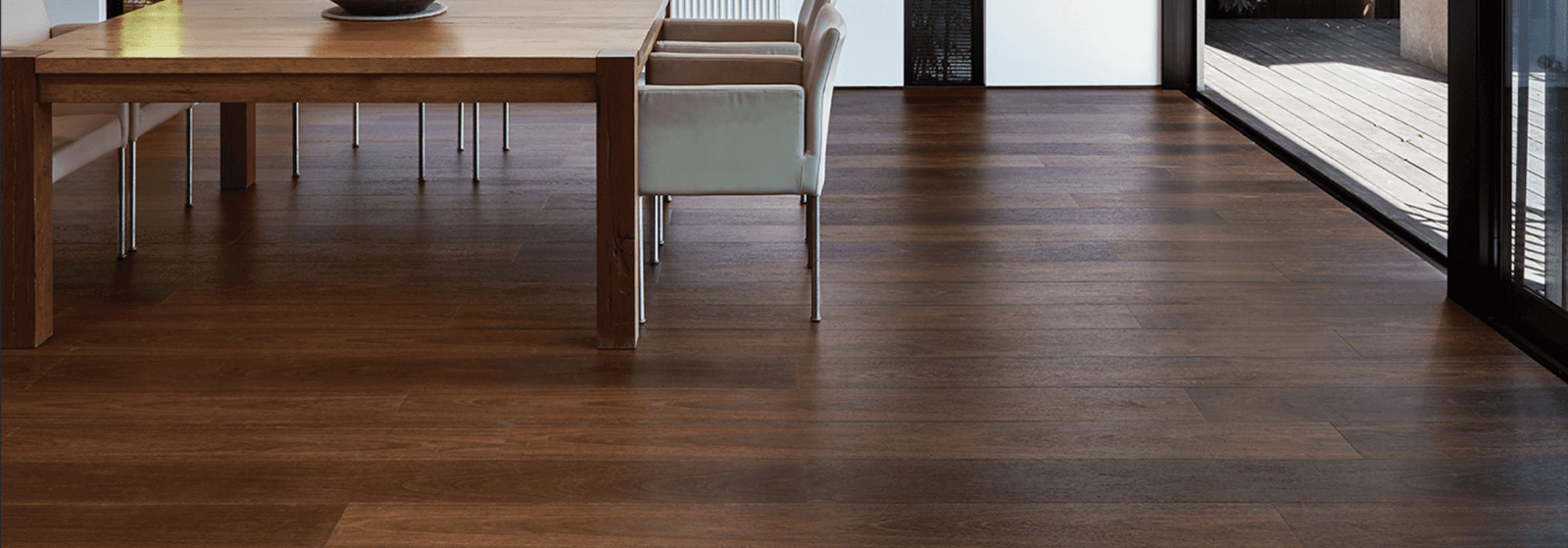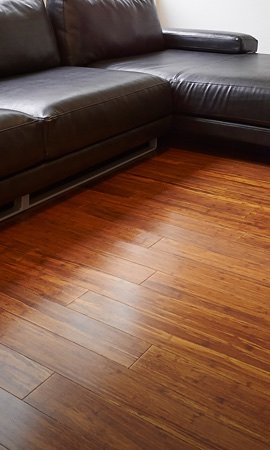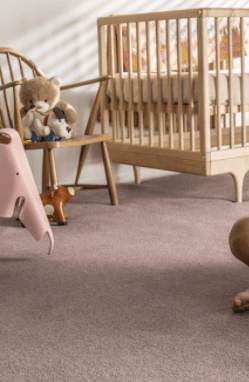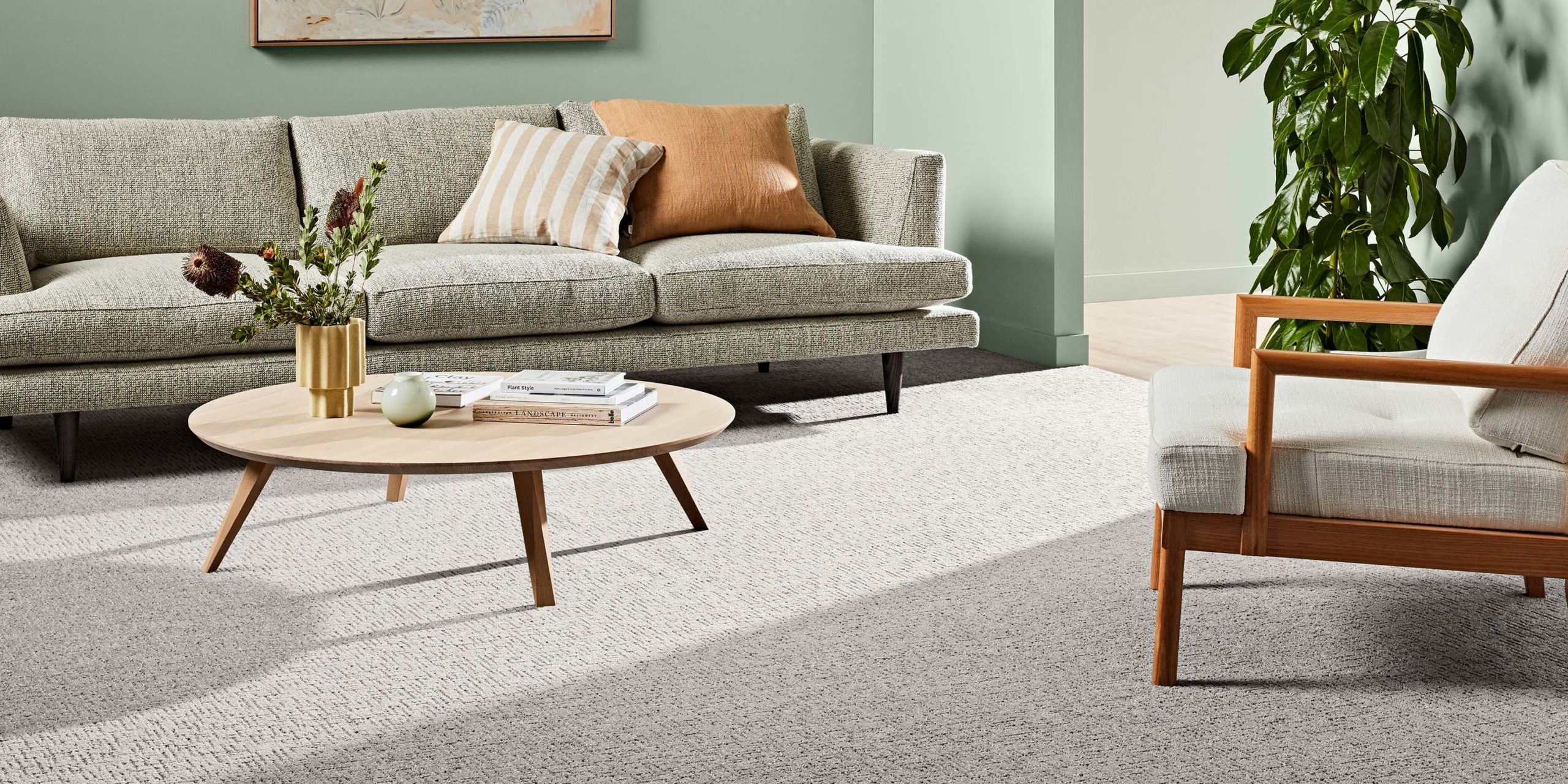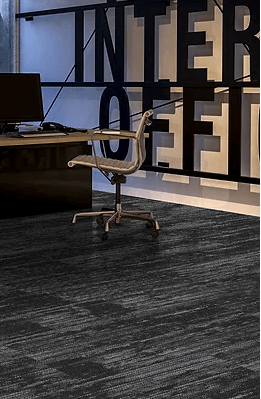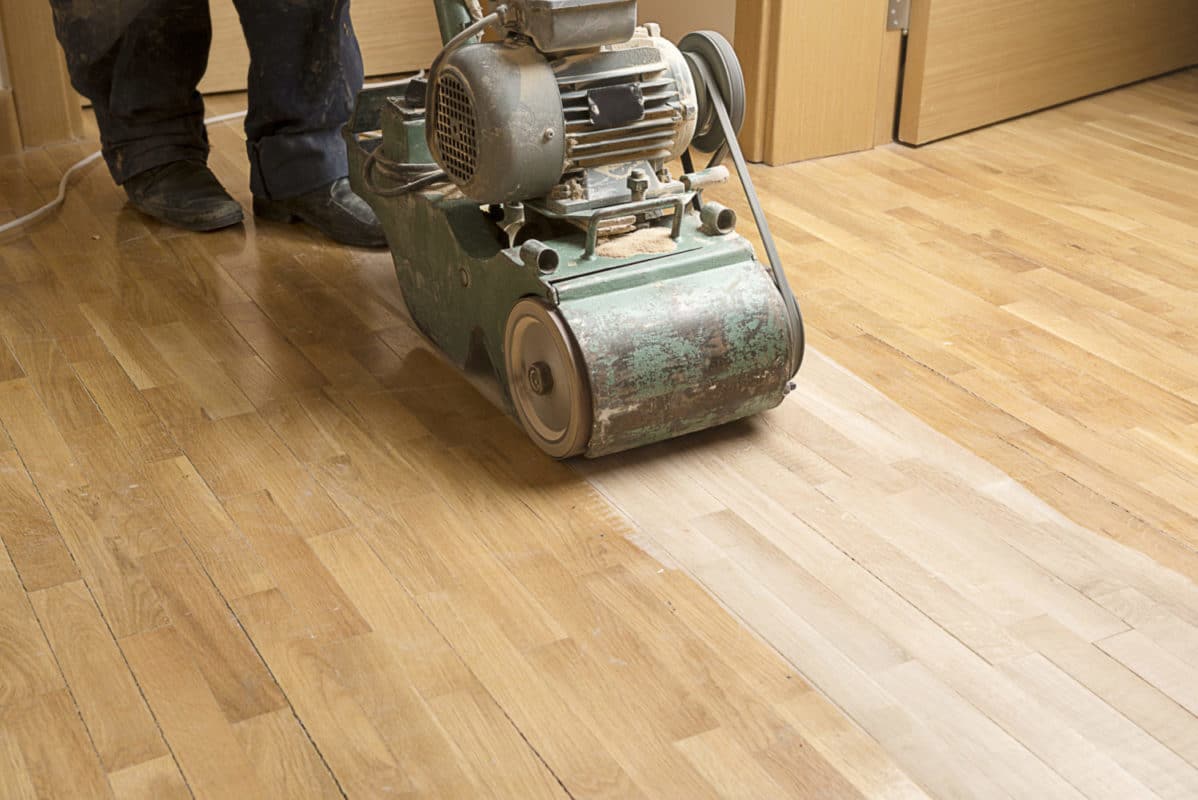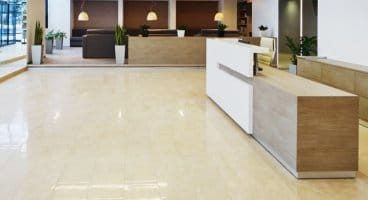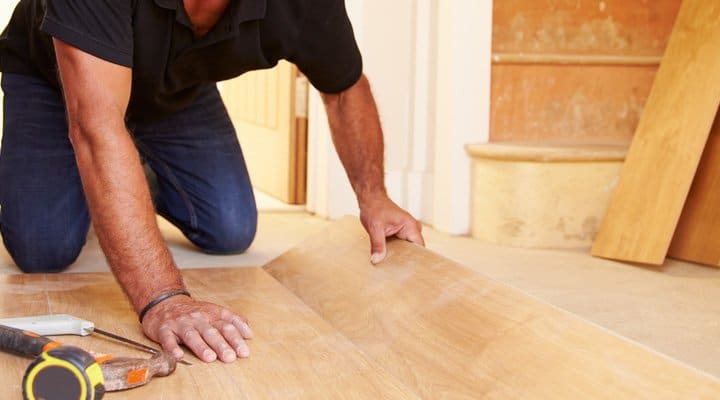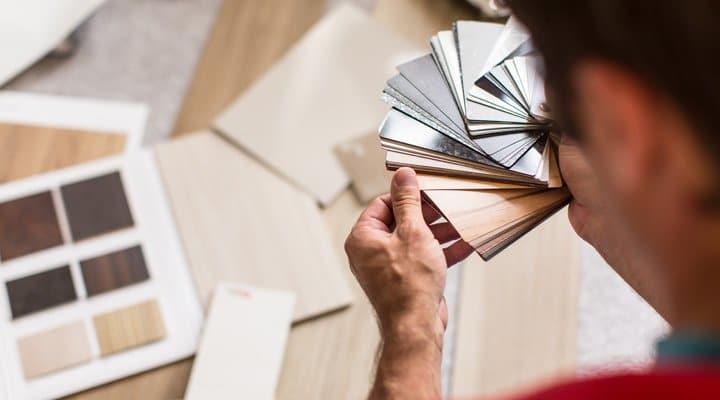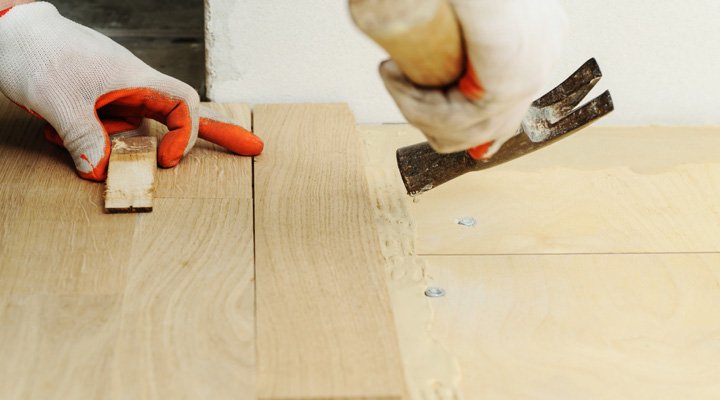

14 Aug What is “Timber Flooring” and which Floor is Best?
If you’re looking for a new floor to install in your home or work place, you can hardly go wrong with “timber flooring”. They’re a classic yet timeless choice, incorporating natural warmth and beauty, and a diverse range of colours, grains and finishes.
You might be wondering why we’re putting quotation marks around “timber floors”. With the advent of high-tech flooring options like hybrid flooring and engineered timber floors, the term “timber flooring” can often become confusing because most people use it to group all types of “wood-like” flooring. In all actuality, however, most of the “timber flooring” we refer to is not actually composed of any real “timber” from trees!
As we enter the 2020s, the majority of “timber flooring” on the market has shifted towards these non-timber varieties, which can bring benefits over natural solid timber like waterproofing and cost-effectiveness.


What are your Timber Flooring options?
Category 1: Solid Timber Flooring
What is Solid Timber Flooring?
Solid timber flooring really is the king of flooring, using actual pieces of timber that are cut to make robust floorboards. This option is tried and true, giving you the benefit of having a completely natural floor that can last for decades, whilst looking and feeling great in the meantime.
Advantages of Solid Timber Flooring
1) Premium & Authentic Look and Feel
Solid timber floors are the real deal, and it definitely shows in their appearance. Not only do you get the natural beauty and charm of timber, but also a floor that feels very sturdy underfoot. What more could you ask from these fantastic floors?
2) They Last a Lifetime
As these floors are essentially solid pieces of wood, they can be resanded and repolished right down to the joints that hold them together. In essence, you’re able to scrub away any wear that your solid timber floor has accumulated over time, revealing a fresh, new surface underneath. Solid timber floors also have a longer sanding life than alternatives such as engineered timber flooring, so they’ll be holding steady for years, if not decades.
3) Easy to clean
Solid timber floors only need minimal cleaning because they provide a hard, flat surface that doesn’t trap any dust or grime. Usually, occasional sweeping or mopping is enough to keep your floor looking in tip-top condition.
4) Durable
Solid timber floors are coated with hard-wearing finishes like polyurethane, giving you a surface that resists any of the dents and scratches you throw at it. This makes these floors particularly suitable for high-traffic areas like the living room.
Disadvantages of Solid Timber Flooring
1) Surface not as durable as other surfaces
Solid timber floors are plenty durable enough for the wear and tear that even children and pets can put on them. However, if you’re looking for a floor that works in high-moisture areas or can really withstand abuse, you might be better suited with man-made alternatives like laminate, hybrid or vinyl flooring. These floors use extremely scratch-resistant coatings that are made of materials like aluminium oxide.
2) Less affordable
Solid timber flooring is less affordable than other flooring options because supply is determined by the slow growth of the trees needed. However, these higher upfront costs are offset by the longevity of solid timber floors, as well as the fact that other floors just can’t match the natural look of real timber.
3) Naturally expands and contracts
Solid timber floors naturally contain moisture within the wood fibres, causing expansion and contraction of the floorboards when the temperature or humidity changes. This means that small gaps will need to be left between floorboards during installation; otherwise, your floor may experience creaking or even buckling.


Category 2: Engineered Timber Flooring
What is Engineered Timber Flooring?
Engineered timber floors are a great alternative to solid timber floors when you’re looking for a floor that has the beauty of real timber on the surface. If you’re looking for a more comprehensive comparison of engineered timber with solid timber floors, check out this article we made!
The key to engineered timber floors is that they have a multi-layered construction, with a thin (1-4mm) layer of hardwood on top bonded to a more affordable plywood (usually ply, pine, or rubber wood) substrate. This construction gives engineered timber floors some unique benefits, outlined below.
Advantages of Engineered Timber Flooring
1) More Affordable than Solid Timber Floors
Less solid wood used = more affordable than solid timber floors. Is it really that easy, you ask? Sure is! Engineered timber floors can deliver the looks and quality of wood with minimal compromise.
2) More stable
As a result of its multi-layer construction, engineered timber floors are very stable. What does this mean? Well, solid timber floors expand, contract, or (rarely) warp when the weather changes drastically. Engineered timber floors don’t have this problem to the same extent, limiting any creaking that you’ll hear in extreme conditions.
3) Premium look and feel
You’d be hard-pressed to tell the difference between solid wood and engineered timber floors from their surface, because they’re the same! However, one difference in this field is that the stability afforded by engineered timber floors allows them to have wider floorboards (over 100mm wide!) if you so choose. Wider floorboards are great if you really want to bring out the unique grain and natural features of timber.
4) Lower Maintenance
Engineered timber floors have been prefinished with strong protective coatings, some of which can even make the floor water resistant. This also means easier cleaning, because you can be assured that there won’t be any dirt or dust that can slip through any cracks.
If your floor does start to look tired, don’t worry! Engineered timber floors have a top wood surface that’s thick enough for them to be re-sanded about 2-3 times during their life.
Disadvantages of Engineered Timber Flooring
1) Shorter Lifespan compared to Solid Timber Floors
Despite their high-tech construction, engineered timber floors face a few challenges to how long they last.
Firstly, engineered timber can be susceptible to delamination, where the bonded layers in the floor separate. This can be caused by improper manufacturing, or if water has seeped into the floorboards from underneath.
Another inherent problem affecting the longevity of engineered timber floors is that they just don’t have very much real wood on them. This reduces the number of times that you can re-sand your floors compared to solid timber floors.
2) May Emit Fumes
Engineered timber floors make use of bonded components, and the glue used may release smelly volatile organic compounds (VOCs). This varies between brands, so you’ll need to check with your supplier about your particular floor.


Category 3: Man-Made “Timber” Flooring (Laminate Flooring, Hybrid & Vinyl Flooring)
If you’re looking to get the look of timber at an even more affordable price, look no further than non-timber options such as laminate, hybrid and vinyl flooring. These floors use modern techniques and high-tech printing to give the appearance of real wood.
Advancements in technology and research have enabled these floors to be superior to solid timber flooring in many ways: durability, water-proofing, ease of installation and price.
Although this more affordable option may not be able to match the uniquely natural character of wood, artificial timber floors are becoming a better and better option in 2020, especially in high-wear or high-moisture environments.
Option 1: Laminate Flooring
(If you’re exploring laminate flooring, we have a guide on laminate floors and their benefits and drawbacks! Check it out here!)
Laminate is a highly affordable flooring option that consists of a print layer (of a digital image of timber) bonded between a highly durable top coating and a HDF (high-density fibreboard) base.
Advantages of laminate flooring
- They’re installed as a floating floor (making it cheaper to prepare and install)
- They’re much easier to maintain than solid wood or engineered timber floors because they’re scratch and fade resistant – in fact, sweeping or vacuuming is usually enough to keep your floor looking tip top.
- As the surface of laminate flooring is a high definition printed layer, interior designers have come up with hundreds of styles and colours. At FloorVenue, we have one of Australia’s most complete range of laminate floors, covering over 100 colours and styles!
Disadvantages of laminate flooring
- They might look ‘fake’ when viewed closely, particularly with lower-quality print layers.
- In addition, as the print layer is essentially a photo of the real wood, some of the wood patterns can repeat themselves too frequently and look unnatural – this can be mitigated by staggering the floorboards and choosing higher-quality laminate floors.
- Laminate floors also can’t be re-sanded or re-polished, limiting their longevity.
- They’re also vulnerable to moisture that seeps through the click-lock joints, which can cause warping, so make sure to wipe up any spills immediately!
Nevertheless, laminate flooring continues to be a realistic and affordable option for your home in 2020 and beyond, particularly if you’re renovating or just want to temporarily change your floors.
Option 2: Hybrid Flooring & Vinyl Flooring
(We’ve got an entire guide on hybrid floors, which goes through its features in more depth. Make sure to take a look through it here!)
Hybrid flooring is a newer entrant to the flooring market that looks like real wood whilst also being waterproof. This makes them perfect for the kitchen, laundry, or other high-moisture areas.
Hybrid floors are similar in composition to laminate floors, but incorporate PVC plastic into their core substrate. This not only gives hybrid floors waterproof qualities, but also makes them incredibly stable to any temperature or humidity changes. Hybrid floors are also primarily installed as a floating floor, so they’re easy to install and uninstall if you’re tired of the existing look of your floors.
Meanwhile, vinyl floors use flexible PVC plastic that has had textures and colours printed onto them. While you’ll usually find vinyl floors in a sheet form (allowing you to lay them like a mat onto your existing floor), you can also get vinyl floorboards. Like hybrid floors, vinyl is also 100% waterproof and suitable for high-moisture or high-traffic areas.
Advantages of hybrid and vinyl flooring
- As these floors don’t have any of the moisture-absorbing pores or fibres of real timber or plywood, they are completely waterproof! This makes them great for places like the laundry and kitchen.
- The manufacture of hybrid and vinyl floors isn’t limited by waiting for trees to grow, so they’re more affordable.
- Hybrid and vinyl floors are extremely durable by virtue of their hard-wearing topcoat that are made of substances like aluminium oxide.
- Because they’re durable and waterproof, hybrid and vinyl floors are perhaps one of the easiest types of floor to clean. All you need is a broom, vacuum, or mop.
Disadvantages of hybrid and vinyl flooring
Unfortunately, as with any other synthetic surface, hybrid and vinyl floors can have the same drawbacks as laminate floors.
- As the appearance of hybrid and vinyl floors relies on the printing technology used to manufacture them, these floors can look ‘fake’ when viewed closely.
- Pattern repetition is a problem where the grain and features of the timber pictured repeat themselves too frequently, although this should be easy to check in the showroom. This doesn’t affect high-quality hybrid or vinyl floors.
- Hybrid and vinyl floors also can’t be re-sanded or re-polished, limiting their longevity once they’re looking tired.
Option 3: Timber-Looking Tile or Stone Flooring
Timber-looking tile or stone floors are a great option when you want a 100% waterproof floor surface that mimics the grain of wood.
Tiles are made of porcelain or ceramic, with porcelain tiles being harder, more durable, and a little more expensive than ceramic tiles. Meanwhile, stone floors use a proprietary formula containing limestone.
Both options are great when you want a surface that’s really easy to keep clean, and they can even be installed in outdoor areas. The biggest difference between tile and stone is that stone floors offer better thermal regulation – they feel cooler during hot Australian summers, and are warmer during the winter.
Advantages of tile and stone flooring
- As you’d imagine, tile and stone flooring is much harder than any other timber-like floor out there. This is great for durability, and especially when kids or pets are in the mix.
- They’re completely waterproof, which is why they’re commonly found in areas like the bathroom.
- They’re a cinch to clean, and are a very low maintenance flooring surface.
- They’re made of substances like sand and clay, so they’re eco-friendly.
- They are installed with soundproof underlay, making them perfect for places like apartments, where noise is an issue.
Disadvantages of tile and stone flooring
- Unlike stone flooring, tile isn’t necessarily inexpensive, especially it is more difficult to install than other timber alternatives. Installation generally requires cement and adhesive and can be time-consuming. It is cheaper than solid timber floors, though.
- Tile and stone can feel cold and hard underfoot, which can be uncomfortable (particularly in the winter!).
Category 4: Bamboo Flooring
As their name suggests, bamboo floors are made of bamboo grass that is shredded and combined with a mixture of heat and glue. These floors are a little more difficult to find, but are a harder and more durable option compared to solid and engineered timber.
While bamboo floors do mimic timber at first glance, they actually have their own unique grain and texture! Bamboo floors come in a wide variety of stains and finishes, such as the rustic weathered tones of Genesis’ Java floor, or the clean minimalism of Greena’s Lime Wash. You can find both of these floors (and more) at FloorVenue, of course!
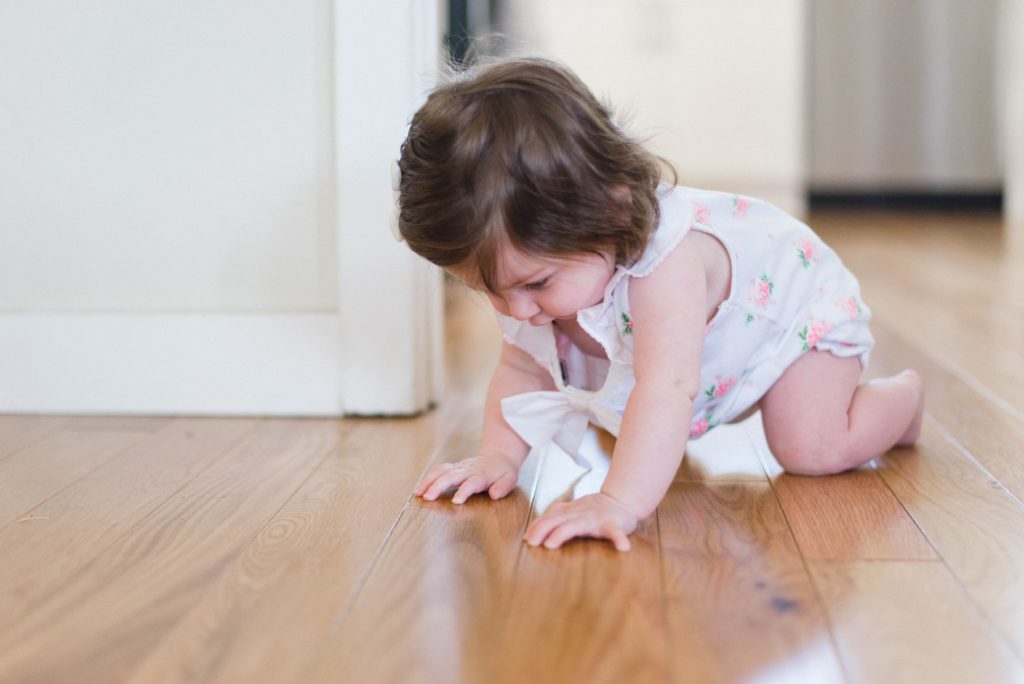

Comparison of Timber Flooring Types
So, here’s a rundown of how these timber floors compare:
| Type of Floor | Solid Timber | Engineered Timber | Artificial Timber (Laminate, Hybrid) |
| Affordability | Least affordable | More affordable | Most affordable |
| Ease of installation | Hardest to install (particularly raw timber) – can’t be floated | Easier to install – can be installed as a floating floor | Easiest to install – floating floor only |
| Durability (scratch and impact resistance) | Least durable | More durable | Most durable |
| Composition | Most natural | Less natural (bonded layers) | Least natural (made of synthetic materials) |
| Longevity | Lasts the longest – can be renewed many times | Doesn’t last as long – can only be renewed 2,3 times | Last very long, but can not be resurfaced |
| Water resistance | To some extent | Can be 99% waterproof | Can be 100% waterproof |
| Range of designs | Limited by wood availability | More choices in colours and designs | Highest choices in colours and designs (only limited by what can be printed on) |

